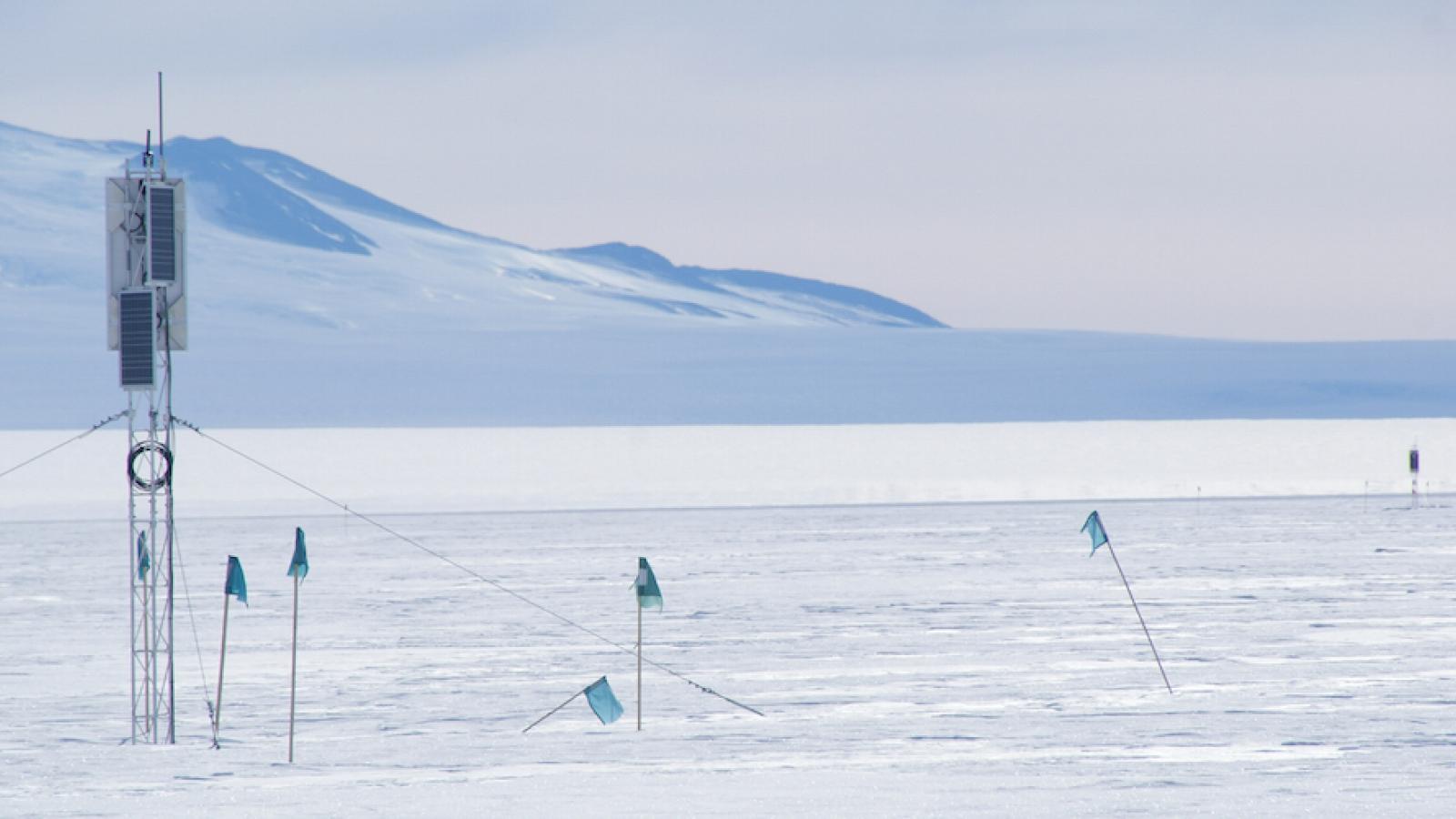ARIANNA (Antarctic Ross Ice Shelf Antenna Neutrino Array)
The ARIANNA stations are located on the Ross Ice-Shelf at Moore’s Bay in Antarctica. There are currently eight ARIANNA stations, which are prototypes in an experiment titled the Hexagonal Radio Array (HRA) designed to track cosmological neutrinos - the highest energy neutrinos that have yet to be attempted to be tracked. Generally, the higher energy the neutrino, the larger the detector that must be built to track them. However, the high energy neutrinos trapped in the ice give off radio signals called Cherenkov emissions which can be tracked by the ARIANNA stations without needing to build an impractically large station to find them. If the prototypes are successful, the full ARIANNA telescope will contain 1000 detector stations spread over an area of 36km by 36km.
Neutrinos are the hardest known particle to track because they are almost massless, have no charge, and rarely react to any matter due to their lack of charge. For these reasons, not much has been yet discovered of the physics of neutrinos. However, neutrinos are studied because they reveal the secrets of high energy cosmic rays. Cosmic rays are actually made of particles that contain energies that reach higher levels than anything ever created by man. Cosmic rays do not travel in straight lines through the universe and can be deflected by magnetic fields. Neutrinos, however, which hypothetically have the same source as cosmic rays, do not react with magnetic fields and most matter, so if neutrinos can be tracked, they can be used to find the origin of neutrinos and cosmic rays. The ARIANNA will be able to track the neutrinos in fundamental parameters that cannot be measured with current man-made accelerators.
Sources:
http://arianna.ps.uci.edu/
https://newscenter.lbl.gov/2010/04/19/neutrinos-cosmic-rays/
https://arxiv.org/abs/1005.5193

